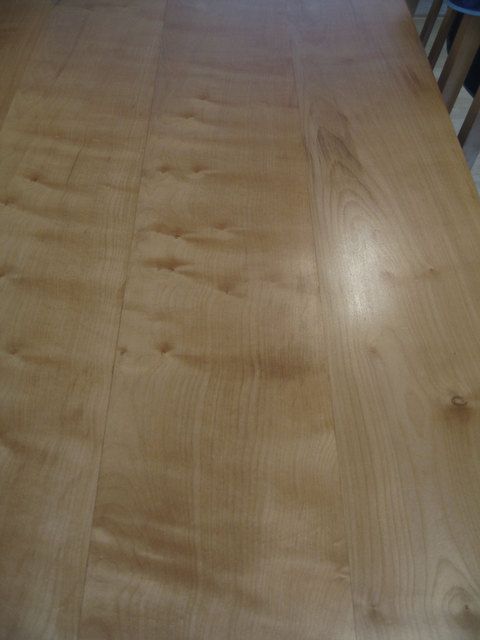Here's a photo of the kitchen table I made about 3 years ago in sycamore and finished with Sam Maloof's mixture of varnish/white spirit/oil.
It is used regularly for dining off and the artistic endeavours of my 4 year old and 11 month old granddaughters. It has survived very well and only receives a regularly wipe with a damp cloth.

I gave it 4 coats of the initial mix followed by 2 coats of the wax mix - it has not been polished or waxed since! It is very easy to apply - similar to Osmo and easy to make. Mix applied thinly, left for 20 mins then any excess wiped off, leave for 24hrs then apply again. The PU varnish in the mix makes it water resistant.
Rod
It is used regularly for dining off and the artistic endeavours of my 4 year old and 11 month old granddaughters. It has survived very well and only receives a regularly wipe with a damp cloth.

I gave it 4 coats of the initial mix followed by 2 coats of the wax mix - it has not been polished or waxed since! It is very easy to apply - similar to Osmo and easy to make. Mix applied thinly, left for 20 mins then any excess wiped off, leave for 24hrs then apply again. The PU varnish in the mix makes it water resistant.
Rod
































